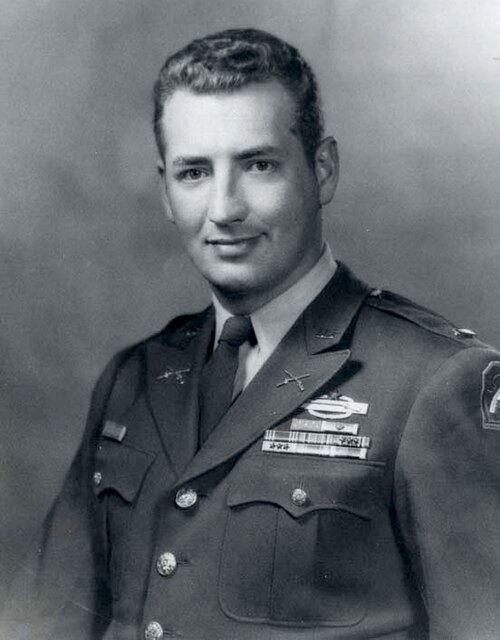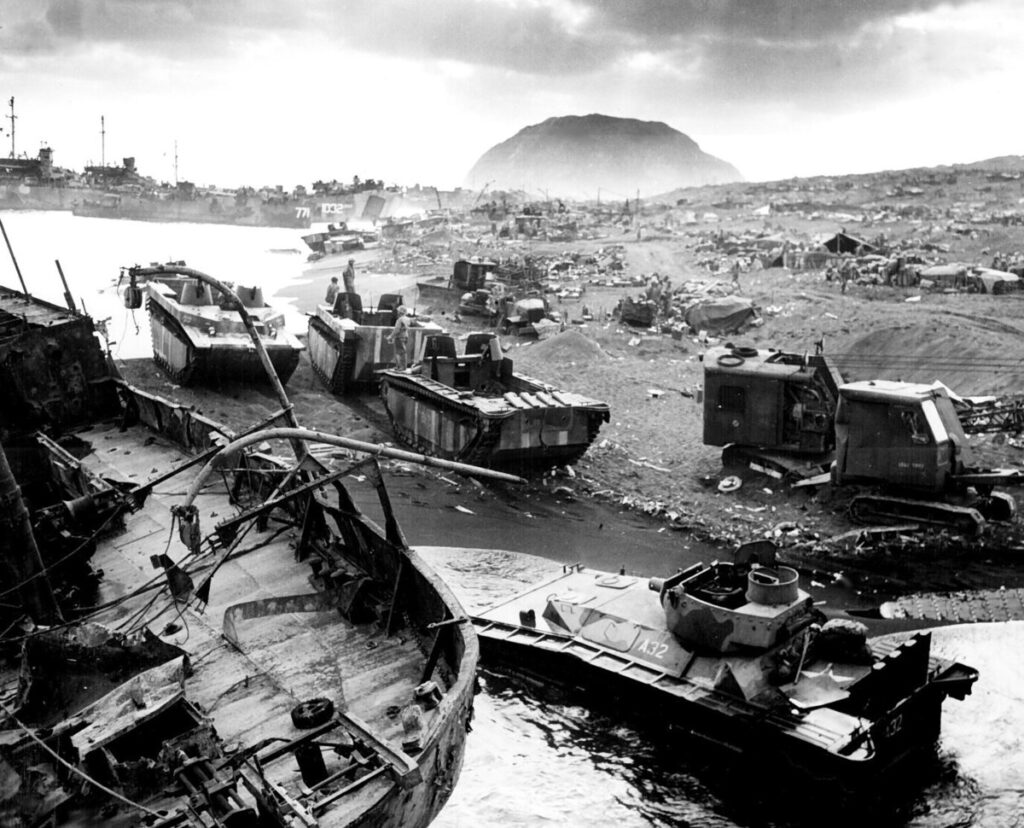Mounting a knife on the end of a rifle might seem like an antiquated tactic, especially when the enemy is bearing down on you with automatic weapons, explosives, and whatever else they brought to bear. Running at these killing machines with sharp, cold steel might seem like suicide.

Stanley Adams Chose a Bayonet Charge
The only problem with that point of view is that bayonet charges still work on the battlefields of today’s wars, because there’s nothing that instills fear in the enemy like dozens of knives running at them at full sprint. That’s why then-Sgt. 1st Class Stanley Adams decided it was the thing to do.
By the time the Korean War came around, Stanley Adams was a seasoned combat veteran. The Kansas native was wounded in action while fighting in both North Africa and Sicily during World War II. After the war, he was sent to Japan for occupation duty. It wasn’t long after North Korea invaded South Korea that he was sent to that war, too.
Stanley Adams Led a Bold Counterattack
Leading Company A of the 1st Battalion, 19th Infantry Regiment, 24th Division, his platoon was a part of a large counteroffensive against the Chinese People’s Volunteer Army. Chinese intervention during the previous year pushed the American and United Nations forces back toward South Korea, and the war had ground to a stalemate.
In 1951, he and his men manned an outpost on a ridgeline south of Seoul, 200 yards in front of the rest of the company. At around 11 p.m. on February 3, 1951, the communist forces attacked an adjacent position, driving a wedge between his company and another. Two hours later, his outpost was hit by 250 enemy soldiers from three sides with mortars and machine guns. They were able to hold their position for 45 minutes, but were forced to fall back with the rest of the company.

Seeing that they were outnumbered, Adams ordered his men to fix bayonets. He and 13 other soldiers charged at least 150 enemy troops.
Stanley Adams Earned the Medal of Honor
As he approached to within 50 yards of the communist line, he was hit in the leg, a wound that knocked him to the ground. He leapt back up and continued the charge. As he ran, grenades hit his body four times, knocking him to the ground with each subsequent explosion. He ignored his wound and the blast and ran on.

When he finally reached the enemy, he engaged in hand-to-hand combat with one man after another, fighting for an hour, as he and his fellow soldiers killed 50 communist troops. When the enemy finally broke and ran, he withdrew with his men, providing cover fire as they returned to their battalion.
Adams would receive the Medal of Honor for his audacious bayonet charge into the jaws of death that day, along with a promotion to master sergeant. Shortly thereafter, he was commissioned as a second lieutenant and stayed in the Army until 1970. He retired as a lieutenant colonel and went to work for the IRS in Alaska. He died of Alzheimer’s Disease at the Oregon Veterans Home in The Dalles, Oregon, in 1999. He was 76 years old.
Read About Other Profiles in Courage
If you enjoyed learning about Lt. Col. Stanley T. Adams, we invite you to read about other profiles in courage on our blog. You will also find military book reviews, veterans’ service reflections, famous military units and more on the TogetherWeServed.com blog. If you are a veteran, find your military buddies, view historic boot camp photos, build a printable military service plaque, and more on TogetherWeServed.com today.

0 Comments